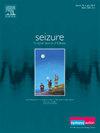The EpiLing-Tool: A new tool to distinguish epileptic seizures from dissociative seizures in the first encounter between physician and patient
IF 2.7
3区 医学
Q2 CLINICAL NEUROLOGY
引用次数: 0
Abstract
Purpose
Studies have shown that conversation analysis of doctor-patient-encounters can help with the distinction of accounts of epileptic seizures (ES) and dissociative seizures (DS). We were keen to make these linguistic insights available to clinicians.
Methods
We analyzed 80 doctor-patient-encounters with young seizure patients (aged 6.1 to 17.9 years, mean 13.9 years). The conversations followed a guideline highlighting the importance of open invitations for patients to talk.
Based on previous studies, we created the EpiLing-Tool: a scoring-table with two sets of eight items – either favoring a diagnosis of ES or DS. The items focus on how patients describe the seizures, on their attitude towards the seizures, seizure interruption strategies and the course of the conversation.
In two one-day-training sessions clinicians blinded to the medical diagnosis used the EpiLing-Tool on recordings of patient interviews. In one session 50 participants rated eleven recordings, in the other session 25 participants rated ten different recordings.
Results
A mean of 30.8 EpiLing-Tools (range 9 to 49) were completed for every recording. In the eight patients with DS, the correct diagnostic conclusion was documented in 206 of 237 ratings using the EpiLing-Tool (sensitivity 86.9 %). In the ES group, the correct diagnosis was identified in 364 of 409 ratings (sensitivity 89.0 %); the sensitivity of the tool did not differ between the five patients with focal ES (sensitivity 88.6 %), and the eight patients with generalized ES (sensitivity 89.2 %).
Conclusions
The EpiLing-Tool is a simple and promising scoring table that can help clinicians to recognize DS when they first take the history of children and adolescents with seizures.

脱毛工具:一种新的工具,以区分癫痫发作从游离性发作在医生和病人之间的第一次接触
目的研究表明,医患对话分析有助于区分癫痫发作(ES)和分离性发作(DS)。我们热衷于将这些语言学见解提供给临床医生。方法分析80例年轻癫痫患者的医患关系,年龄6.1 ~ 17.9岁,平均13.9岁。谈话遵循了一个指导方针,强调了公开邀请患者谈话的重要性。基于先前的研究,我们创建了EpiLing-Tool:一个包含两组8个项目的计分表——要么倾向于ES诊断,要么倾向于DS。这些项目集中于患者如何描述癫痫发作,他们对癫痫发作的态度,癫痫发作中断策略和谈话过程。在两次为期一天的培训课程中,对医学诊断不知情的临床医生使用脱毛工具记录患者的访谈。在一组中,50名参与者给11张唱片打分,在另一组中,25名参与者给10张不同的唱片打分。结果每次记录平均完成30.8个脱毛工具(范围9 ~ 49)。在8例退行性退行性痴呆患者中,使用脱毛工具进行评分的237例患者中有206例得出了正确的诊断结论(敏感性86.9%)。ES组409个评分中有364个诊断正确(敏感性89.0%);5例局灶性ES患者(敏感性88.6%)和8例广泛性ES患者(敏感性89.2%)对该工具的敏感性无显著差异。结论EpiLing-Tool是一种简单而有前景的评分表,可以帮助临床医生在首次记录儿童和青少年癫痫发作史时识别退行性痴呆。
本文章由计算机程序翻译,如有差异,请以英文原文为准。
求助全文
约1分钟内获得全文
求助全文
来源期刊

Seizure-European Journal of Epilepsy
医学-临床神经学
CiteScore
5.60
自引率
6.70%
发文量
231
审稿时长
34 days
期刊介绍:
Seizure - European Journal of Epilepsy is an international journal owned by Epilepsy Action (the largest member led epilepsy organisation in the UK). It provides a forum for papers on all topics related to epilepsy and seizure disorders.
 求助内容:
求助内容: 应助结果提醒方式:
应助结果提醒方式:


